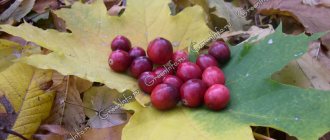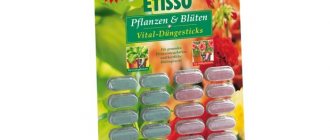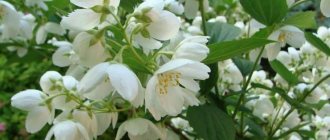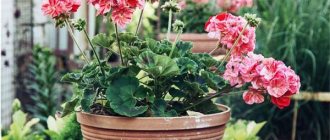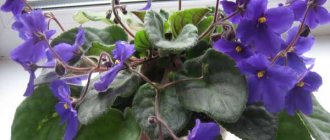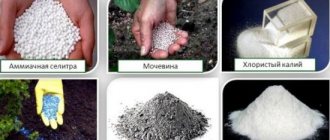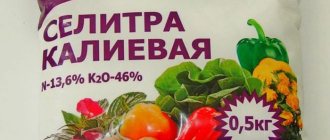All plants on earth need energy to grow.
They get it by processing minerals found in the soil. But soil reserves are not unlimited and are gradually depleted.
To prevent this from happening and the plant not to die, various fertilizers are applied.
Necessary substances
Since the volume of the pot in which the violet grows is not large, the supply of nutrients is used up quickly .
For the normal functioning of Saintpaulia, it is necessary to apply the fertilizers it needs. Namely:
- Phosphorus-potassium (for flowering);
- Nitrogen (to increase green mass);
- Vitamins and amino acids (stimulation of roots to absorb macro and microelements from the soil).
Complex fertilizer (stick)
The dry form of fertilizer (Etisso sticks) is suitable for any green and flowering plants.
The composition is a harmonious mixture of organic and inorganic nutrients, which allows you to reliably and without problems take care of plants. Contains NPK complex + magnesium (MgO) and trace elements (iron, copper, manganese, zinc).
Thanks to a special formulation, the possibility of overdose and burning of plant roots is completely eliminated, while all nutrients are evenly distributed during normal plant watering. A constant and even supply of nutrients is guaranteed for 6-8 weeks.
The package contains 20 sticks - 10 green and 10 red. Use red on flowering plants every 6 weeks during flowering. Outside the flowering period or for green plants, use green sticks every 6-8 weeks. Place the fertilizer stick closer to the edge of the flower pot and cover it with soil. Water the plants regularly. 2-3 sticks per plant depending on size.
Classification
There are two types of fertilizers:
Mineral
Of these, the most significant are: N (nitrogen), P (phosphorus), K (potassium).
If you use complex ones containing NPK, then you should focus on a higher concentration of nitrogen or in the same ratio.
If you take simple ones containing one component, you can add them alternately or mix them.
Organic
These include: compost, manure, peat, straw, etc.
They contain a complex of substances necessary for plants.
However, use it with caution, as it contains a lot of nitrogen, which stimulates the growth of the rosette, but inhibits flowering.
If the root system is underdeveloped, apply foliar feeding. This way the nutrients will penetrate the plant faster.
Advantages and disadvantages of Ethisso fertilizer
Etisso is a German brand. Fertilizers are produced in Germany, and their quality meets all international and Russian standards.
Advantages:
- balanced composition;
- easily digestible form of nutrients;
- vitamin B1 content, which improves the circulation of juice in plants;
- convenient packaging with dispenser;
- affordable price (about 500 rubles per 1 liter);
- economical consumption (1 liter is enough for about 3 years);
- range;
- environmentally friendly packaging made from recyclable plastic.
“Ethisso” stimulates lush flowering and healthy growth of plants (the properties declared by the manufacturer are confirmed by numerous reviews from flower growers). It is used to fertilize violets, pelargoniums, fuchsias and many other indoor flowers.
The product does not deteriorate for a long time - the shelf life is 5 years. It has a pleasant smell and even color.
The only disadvantage of the fertilizer: due to its pleasant aroma and color, the liquid can be confused with a drink. In this regard, Ethisso should be stored exclusively in places inaccessible to children.
Factory fertilizers - Fasco, Peters, Etisso
In the following table we have collected for you modern fertilizers for violets that have the most positive reviews.
| Name | Compound | For what purposes is it used? | Price |
| Alliance | NKP; Microelements; Vitamins; Phytohormones. | Used for flowering plants; Increases resistance to disease. | From 65 to 110 rub. |
| Bevel for violets , series “Flower Happiness” | Universal fertilizer | Improves the appearance of the plant. | A 250 ml bottle costs from 120 to 140 rubles. |
| Peters – Peters Professional | NKP; Universal complex M77 | Root and foliar feeding; Rooting; Budding; For hard water; With a lack of calcium; Winter feeding | A 250 ml bottle costs from 300 to 350 rubles. |
| Etisso for flowering plants | NKP; Vitamins B1; Microelements | Budding; Maintaining flowering; | A 250 ml bottle costs from 250 to 290 rubles. |
Methods of using these fertilizers are described in detail on the packaging of each of them.
Basic composition of Etisso fertilizer
- Nitrogen compounds. Nitrogen included in them in a bound (and therefore convenient for assimilation) form is the main substance for the formation of green masses and branches.
- Phosphates. The phosphorus they contain promotes rooting during vegetative propagation and serves as an impetus for the beginning of flowering.
- Potassium. Necessary for gaining green mass, especially in the initial period of development, during intensive growing season, and at the end, shortly before the formation of seeds after flowering.
- Microelements boron, iron, molybdenum, manganese, copper, zinc. With a balanced and precisely calculated introduction into the composition, fertilizers accumulate in plant tissues and come into effect at the right moment.
- Vitamin B1. Serves to increase plant immunity to external diseases of bacterial or fungal form.
The percentage amount of each substance given in this list differs for different crops grown on the windowsill, so when purchasing fertilizer, you need to carefully read the annotation placed on the package.
It makes no sense to take fertilizers intended for succulents (cacti, immortelle and the like) for crops that require weekly or even more frequent watering. There, the concentration of minerals will be different and their duration of action will be different.
What do children feed?
Do you feed your Saintpaulias?
Regularly Never
Until the roots appear, fertilizing cannot be done .
Only after 25-35 days, after the baby has been disconnected from the mother plant, it is possible to fertilize the small Saintpaulia with nitrogen to increase green mass.
But it is recommended to add potassium and phosphorus every other year.
Experienced gardeners recommend using:
Etisso (for flowering plants). Briefly about its characteristics:
- nitrogen content - 7%
- phosphates-3%
- potassium-4
The site also contains materials about methods of propagating Saintpaulias and the rules for growing them from leaves.
Types of Etisso fertilizers
Etisso Bluhpflanzen Vital—Dunger
Liquid concentrated fertilizer with a predominance of potassium-phosphorus-nitrogen components. Designed for flowering plants.
Compound:
- Nitrogen - 3.8%.
- Phosphates – 7.6%.
- Potassium in the form of oxide – 7.5%.
- Vitamin B1 and microelements listed in the “Basic composition” section.
Etisso Grunpflanzen Vital-Dunger
Liquid concentrate with microelements with a slightly different composition, balanced for feeding deciduous ornamental crops. The concentrate contains:
- Nitrogen – 7.1%.
- Phosphorus compounds – 3.1%.
- Potassium oxide – 4.2%.
- Vitamin B1 and water-soluble compounds of bromine, iron, molybdenum, etc.
Etisso Universal Vital—Dunger
Universal fertilizer for green ornamental and flowering indoor or balcony plants. It contains:
- Nitrogen - 6%.
- Phosphates in water-soluble form – 5%.
- Potassium oxide – 6%.
- Vitamin B1, manganese, copper, zinc, iron, boron, molybdenum – 0.02%.
Etisso Kakteen Vital—Dunger
The composition of this concentrate is balanced for lovers of such exotics as all types of bonsai, orchids and succulents (mainly cacti). This fertilizer, diluted in accordance with the recommendations for each species, can be used both in open ground and for purely indoor breeds in our climate.
It contains:
- Nitrogen in the amount of 2.3%.
- Water-soluble phosphorus – 7.5%.
- Potassium – 7%.
- Water-soluble magnesium – 0.3%.
- Microelements and vitamin B1.
Etisso Pflanzen E Bluten Vital-Dungesticks
It comes in the form of sticks that need to be stuck into the ground at some distance from the central stem. Long-acting fertilizer, has no contraindications or side effects, and is safe in terms of the inability to exceed the dosage.
When watering with regular, settled water, the roots will receive as many minerals as needed. Used as a fertilizer for both flowering and deciduous ornamental crops.
What to use for abundant flowering
In order for your plant to form buds and then bloom profusely, use fertilizer with a high content of phosphorus (P). If you add them constantly, the flower stalks develop faster and their number increases.
If you want to apply fertilizers with each watering, then their concentration should be 5 times less than the norm.
Recommended for use:
- Agricola - for flowering plants
- Uniflor (flower, bud)
- FERTImix - lush flowering
If your Saintpaulia does not bloom, most likely there are problems with its care. Read more about them in the material at the link.
Longevity product for all fresh cut flowers Etisso
With its help, you can easily prepare a nutrient solution to maintain the freshness of any cut flower and ornamental plants.
Contains saccharides, organic acids, as well as stabilizers and natural preservatives, which help preserve the wonderful splendor and extend the period of freshness of cut flowers 2-3 times longer. The water in the vase remains clear and odorless.
It is enough to dilute the contents of the sachet in 1 liter of water. Fill the vase with the resulting solution and place the flowers in it, having previously renewed the cuts and removed the leaves from the bottom of the stem.
"Folk remedies. How to feed at home
Many gardeners believe that the most affordable means of fertilizer are folk remedies.
Black tea
During transplantation, plants need proper care.
One of the important points in care is proper soil moisture.
To prevent the soil from drying out, many people use tea leaves in a ratio of 1:3 to soil.
It provides looseness and lightness to the soil.
We recommend reading : how to choose soil for Saintpaulias and how to choose the right size pot.
Coffee grounds
It has a similar effect to tea leaves - it provides looseness and lightness. But unlike tea, coffee grounds can be used for watering.
Just remember that when watering flowers with grounds, water can only be added after a while.
Yeast
They support the immunity of violets and also strengthen the root system.
In order to prepare the yeast for watering you will need:
- Mix 40 g sugar and 5 g dry instant yeast
- Add 5 liters of water
- Place in a warm place for 3-4 hours
- Before use, dilute with water 1:5
You can water violets with this solution all year round. In summer no more than 3 times, and in winter one watering per month is enough.
Sugar
The most affordable fertilizer at home is sugar.
And not only because every housewife has it in the kitchen, but also because of the ease of preparation.
Simply dilute 50 grams of sugar in one liter of water and feed the plant.
Use the solution immediately after preparation, without further storage. Fertilize once a month.
Vitamin B12
Just like yeast, it strengthens the immune system. Most often used: when the violet has experienced stress (transplantation, purchase in a store) or is exhausted (after flowering).
During these periods, take one ampoule of the vitamin and dilute it with water in a ratio of 1:10.
Use no more than 2-3 times a year.
Citrus
These fruits benefit not only people, but also plants, protecting against various pests and strengthening the immune system. The peel of lemon, grapefruit, orange or tangerine is used .
- Wash the fruit
- Pour boiling water over the peel and leave for a day
- Strain
- Before use, dilute with water 1:10
Onion peel
In order for the husk to be beneficial, it must be: boiled, cooled, strained and sprayed on the plant.
This infusion perfectly gets rid of pests and protects against diseases.
Can be used for prevention, after a change of environment, after abundant flowering, in the spring, when the phase of abundant flowering begins, etc.
Iodine
The trace element Saintpaulia needs is used no more than three times per season. It is prepared in this way: one drop is diluted in three liters of water.
It is better to make a weak solution. Large amounts of iodine can damage the roots.
Varietal violets are especially demanding of care and fertilizer. For example, “Dance of Galaxies”, “Raisin”, “Frosty Cherry”, “Chimera”, “Duchess”, etc.
Etisso for violets
Many selected varieties of violets are perhaps the most capricious creatures for growing at home. Those who decide to breed these sissies with leaves pubescent with soft hairs need to study more than one specialized article in publications for gardeners and scrupulously follow the recommendations given in them.
This is due to the peculiarities of breeding and growth of violets. The term “cuttings” is not suitable for growing these flowers: even a leaf simply torn from the main bush takes root. But the simplicity is apparent - the leaf may well sprout roots (especially if rooting stimulants in the form of “Kornevin” and similar phytohormones were used), but you will not wait for flowering.
How to “please” a violet
Etisso has provided a special fertilizer for this capricious creature. Bottles with complex fertilizers intended for growing violets are marked with red caps. And in the annotation printed directly on the bottle or on the label, there will definitely be a mention of the ownership of this fertilizer.
In our list of varieties above, it comes at number 1, that is, it is Etisso Bluhpflanzen Vital—Dunger. Sometimes the designation Bluten vital is added to the name.
Its composition is designed to stimulate the formation of new buds in flowers, so the use of such a concentrate for ornamental crops will be ineffective.
Violets are another matter. The concentrate contains 3.8% nitrogen, 7.5% water-soluble phosphate P2O, and up to 7% potassium oxide K2O. A copper additive of Cu in the amount of 0.02% is required, as well as micro- and mesoelements molybdenum, iron, zinc and boron. The latter, like the addition of vitamin B1, serves for the formation of developing cells and as an immunostimulant during flowering and pollination - if necessary.
You need to pay attention to the dosage: one full cap of concentrate dissolves not in 1 liter of water, but in one and a half. Remember this when you prepare the mixture for watering. And do not forget to thoroughly stir the amount of base solution poured into the water: it does not dissolve in the water immediately, and by watering the plant immediately after the product has been added to the water, you risk getting a higher concentration of fertilizer in some place. Which in the case of “sissies” violets means an inevitable burn of the root system, which is often on its last legs.
note
When watering violets with water with Ethisso diluted in it, you need to make sure that the water does not get on the leaves. To do this, it is better to use a watering can without a sprinkler at the end, which has a long and thin spout, which will be convenient to apply water and fertilizer directly under the plant, at its butt near the soil.
If drops get on the surface of the leaves, blot them with a water-absorbing cloth. Have you noticed that the foliage of most violets is covered with microscopic plant hairs, a kind of fluff? It is he who suffers from water in the first place; unhealthy spots appear in this place.
Due to the fact that the growth points of violets are located even at the base of the leaf and on its cuttings, the ingress of cold water outside of normal hours, when the violet is resting from flowering (usually this happens in winter), can cause the bush to rot - which indicates that it is damaged by one of the types of fungus. There is also no point in expecting effective growth and flowering from such a specimen.
Watering violets
When talking about watering violets, they always keep in mind that there is always a mineral additive in the water. Therefore, when talking about watering, applying fertilizers is meant by default.
The tenderness of the root system of violets also implies special requirements for the soil. For the cultivation of this plant, ready-made peat mixtures sold in flower shops are not suitable: the root system of the plant needs not only water with fertilizers dissolved in it, but also air for breathing.
Once they dry out (and this happens to them often), they are no longer able to fully and evenly absorb water. Now, in order to saturate this dry peat ball with moisture, you have to completely immerse it, along with the pot, in a container of water - and then wait for the excess to drain. This can completely wash out the previously accumulated nutrients from the soil in the pot, and most importantly, such first drying and then waterlogging is extremely stressful for the violet.
When overdrying, nitrogen compounds suffer the most, from which free nitrogen simply evaporates into the atmosphere and can no longer enter into the metabolism needed by the violet. However, other minerals form poorly soluble compounds with soil components, and sometimes substances toxic to violets can be formed.
Thus, the violet develops poorly, not wanting to please with flowers, and even dies not due to a lack of moisture in the soil, but from its excess.
Mineral fertilizers
They are produced in the form of sticks, granules, liquid, etc., everyone chooses the most convenient for themselves. However, liquid fertilizers are considered optimal because They are convenient to dose .
Application rates and dilution rules are usually indicated on the packaging.
The following complex preparations are recommended for feeding violets::
- Which fertilizers are best?
- Agricola,
- Activin,
- Bona Forte,
- Hyleaia,
- Emerald,
- Quantum,
- Novofert,
- Peters,
- Reasil,
- Uniflor,
- Florovit.
Factory "Folk" remedies
Range
The most popular fertilizer is Etisso in an orange bottle with a red cap - Bluhpflanzen, which translates from German: “for flowering plants.” But other products from this manufacturer are also suitable for caring for violets:
- "Etisso Bluhpflanzen" (orange with red cap). The liquid preparation contains nutritional elements necessary for the harmonious development and growth of flowering plants. For the most part, its action is aimed at stimulating the onset of flowering and increasing the number of buds in violets and other flowers.
- "Etisso Universal" (green with red cap). Fertilizer in the form of a liquid concentrate is equally suitable for all types of indoor plants. Fertilizing stimulates active growth, promotes the harmonious development of greenery and the rapid appearance of buds. It can be used all year round, regardless of whether the plant is blooming at that moment or is dormant.
- "Etisso Grunpflanzen" (orange with green cap). The liquid nutrient mixture promotes the active growth of green mass. For violets, it can only be used during the periods before and after flowering. Suitable for young and perennial plants.
In addition to popular liquid concentrates that are easy to dose, there are flower fertilizers in the form of sticks:
- "Etisso Pflanzen E";
- Blattlau Sticks.
The former serve to feed deciduous and flowering plants, the latter additionally repel pests. The sticks are inserted into the ground close to the edge of the flower pot or directly into the garden bed, and they last for 6-8 weeks. Most often used for flowers growing in open ground.
When you can and cannot feed
Violets are fed with fertilizers specially selected for them. They are applied in summer and spring, during the period of active growth and budding.
However, do not forget that in the spring, fertilizers with an excess of nitrogen are required (for the volume of green foliage), and in the summer with a predominance of potassium and phosphorus (for budding and maintaining flowering).
Expert opinion
Pavlova Ekaterina Mikhailovna – agronomist, landscape designer
Participant of scientific conferences
If flowers are grown under artificial light, fertilizer is applied all year round. Experienced gardeners can tell about the lack of any fertilizers by the appearance of Saintpaulia. In autumn, the amount of fertilizer applied decreases, and in winter a dormant period begins.
But there are periods in the life of flowers when the plant cannot be fed , this can be detrimental to it.
- After purchase, the plant cannot be fertilized for 2 weeks; acclimatization occurs.
- After transplanting for a month, the violet experienced stress and is still weakened.
- Sick plants, first of all, it is necessary to find out the cause of the disease.
- In bright sunlight
It is also necessary to remember that watering with any fertilizers should be carried out in moist soil, otherwise you can burn the roots.
Is your Saintpaulia growing poorly and hardly blooming? Perhaps she is stricken with a disease or pests are bothering her.
Additive Methods
The deposit is the same for everyone. The technique may vary depending on the location (window sill or on the wall), only for hanging varieties.
Root
This type of fertilizing is the most effective, since fertilizers are absorbed faster by the roots.
With this method, we recommend following these rules:
- Water, use only at room temperature.
- The concentration of universal fertilizers is 2 times less than what the manufacturer recommends
- By fertilizing mini violets, the concentration of all fertilizers is reduced by half.
- Apply carefully, avoiding contact with the sheet and rosette.
When there are a lot of violets, they are placed in a common tray with fertilizers diluted in water and left for 20-30 minutes until a sufficient amount of moisture is absorbed, with fertilizers diluted in it.
Foliar
When using fertilizer, you should be careful and strictly follow all recommendations:
- Wipe off dust from leaves before spraying.
- Spray ONLY in the morning or evening hours
- Spraying on the inside of the sheet
- Concentration is two times less
- Suitable air temperature
Fertilizer, as well as the methods of applying them, can be different. But it is important to remember that only an integrated approach to the maintenance of violets can bring excellent results. Proper care is the key to abundant and long flowering.
Basic recommendations
It is recommended to fertilize plants with Etisso fertilizer in the evening, when the possible heat subsides. This is especially true for plants that live on window sills facing south and those crops in which the absorption of nutrients from their complex fertilizer occurs not only through the roots, but also through the surface of the leaves (many types of violets).
Most bottles of liquid concentrates are equipped with dispensers of one shape or another. These can be screw caps, the internal volume of which is designed for dilution in a specific amount of water (for Ethisso fertilizers it is usually 1.5 liters), and a measuring cup inserted into a special niche or a syringe included in the kit. Some types of bottles are equipped with dispensers. Measuring cups can also be used for fertilizer in bulk form.
Among the general recommendations, it should be noted that in the spring, plants develop, produce new shoots and form buds especially intensively. At this time, watering with mineral fertilizers is done more often and more abundantly than in previous winter months. Indeed, depending on the type of soil - dense or loose, recommended for certain crops, watering is done rarely in winter, sometimes no more than once a month.
Other tips
Sometimes irregular brown spots appear on the leaves. The leaf tissue in this place dries out over time, becomes discolored, and a hole may even form. This phenomenon is a sure sign of excess mineral fertilizers. It is urgent to reduce the proportion of water-soluble granules or liquid concentrate - all this can lead to the death of the flower crop.
The safest way to fertilize is to use sticks and dry nutrient concentrate stuck into the soil. An overdose in such cases is practically impossible - you just need to make sure that such a stick does not touch the plexus of small roots, as this could cause them to burn. How to avoid this is to pierce the soil with some object and insert a stick into the resulting hole.

